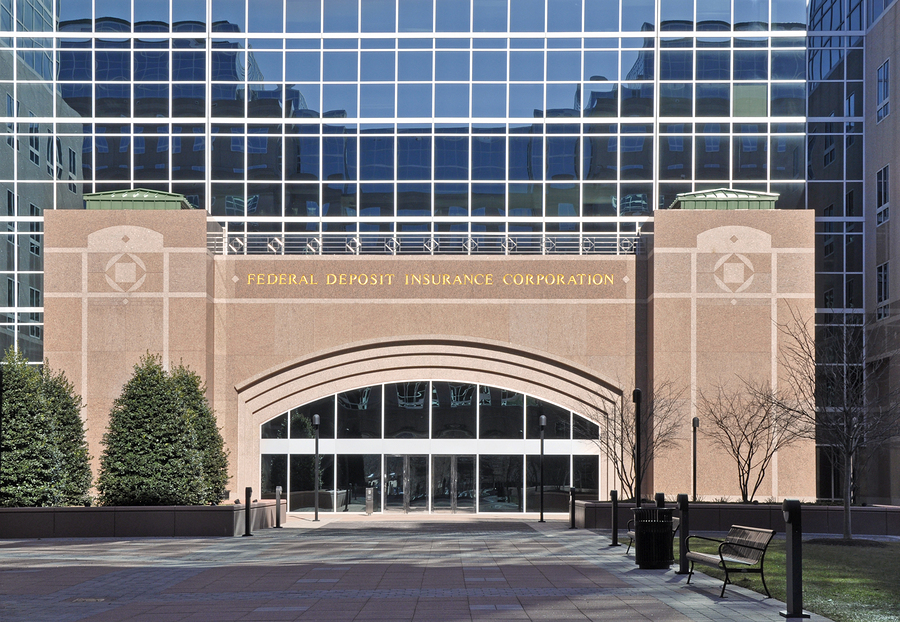View Sale Announcement Detail


Archived news
 Recent warnings from the FDIC are prompting banks to reevaluate their focus on commercial loans.
Recent warnings from the FDIC are prompting banks to reevaluate their focus on commercial loans.
Banks are continuing to shift the weight of their loan portfolios from commercial real estate to consumer lending, and for good reason.
While there has been a rapid boost in commercial real estate lending over the past few years among US banks, recent warnings from the Federal Deposit Insurance Corporation (FDIC) may be contributing to an ease in CRE lending, and a focus on consumer lending.
More Scrutiny on Banks With Heavy CRE Lending Activity
We've seen it before: an ease in loan underwriting standards can be dangerous and lend itself to disastrous results as in the years leading up to the financial fallout of 2008. And with the ease in commercial loan underwriting standards over the past three years, the FDIC wants to ensure that US banks continue to emphasize vigilant risk-management processes when it comes to commercial real estate lending.
Back in 2005, the FDIC, together with the Comptroller of the Currency (OCC) and the Board of Governors of the Federal Reserve System (FRB) and the OCC, issued the "Interagency CRE Statement" as an effort to remind banks about regulations regarding CRE lending. There hasn't been such a reminder until now, with recent cautions that there will be a resumed focus on how risk is managed in commercial real estate lending.
The statement came out after banking regulators grew concerned that banks were overexposing themselves to the commercial real estate market, and the potential risks associated with such intense focus.
Now, the FDIC is revisiting its statement, and placing renewed focus on financial institutions' risk management when it comes to heavy CRE lending.
And with the speedy increase in commercial lending practices over the past few years among the big banks of the US, it's no wonder the regulators are reiterating their focus on such activity.
The largest banks in the US - including the likes of JPMorgan, Bank of America, Wells Fargo, US Bancorp and Citigroup - have an estimated $900 billion invested in their CRE lending portfolios.
Yet with the FDIC indicating that they'll be keeping a close eye on CRE lending practices among banks, it could very well be that CRE lending growth will slow down throughout 2016.
If banks start to ease up on CRE lending, they'll obviously need to shift their focus on other assets, namely consumer lending.
A Shift to Consumer Lending in 2016
In fact, consumer lending has been showing strong signs of recovery following the recession from 2008. In 2015, credit card and auto lending largely contributed to growth in the consumer lending realm, thanks to heightened confidence in consumer spending.
Consumers are becoming more conservative in their lending practices, and have shifted their focus to paying down debt rather than maxing out their leverage. And with rising incomes, improving unemployment rates, and promising economic conditions, consumers are much stronger financially than they were a decade ago.

Consumer lending is proving to be a profitable venture for many big banks in the US.
High-profile institutions like Goldman Sachs have already been paving the way, and are servicing more than their traditional high-net-worth clients. The banking giant is now setting its sights on providing online consumer loans to rival all the fintech competition that has shaken the banking industry over the recent past. It's a lucrative proposition, given the fact that this particular marketplace is worth an estimated $850 billion.
JPMorgan Chase has also been dabbling in consumer lending, including online lending. The bank's recent partnership with online lender On Deck has given JPMorgan the chance to more deeply understand the online lending environment while providing banking products to the average consumer.
This trend is expected to flourish well into the near future as an increasing number of consumers seek out increased credits and the acquisition of new credit. Such a scenario will help boost gross lending for banks, as well as help maintain strong balance sheets.
The demand for small consumer loans in various forms is on the rise, which in and of itself should flag banks for opportunity. The number of consumers with personal loans has jumped 18 percent since the third quarter of 2013.
With a strengthened consumer demographic, banks are are increasingly expanding their products and loan assets by focusing on consumer lending as a means to diversify and strengthen their loan portfolios.
Increased Credit Card Lending
There are a number of avenues for banks to take in the consumer lending realm, and credit card loans are one of them. Along with optimism in consumer spending comes the increase in credit card loans.
And many big banks are already trying their hand at increasing their credit card loans among the average consumer, including JPMorgan Chase. A good part of the bank's strong Q4 earnings in 2015 was a direct result of increased profits from credit card loans.
Stronger Numbers in Auto Loans
Banks are also increasingly tapping into potentially lucrative auto loans, and have profited handsomely as a result. These types of consumer loans are quite attractive to financial institutions as they tend to come with short terms and are typically collateralized.
And with a combination of rock-bottom oil prices, an improved labor market, and growing demand for auto loans, perhaps this is one avenue that banks should be taking a serious look at.
Balancing Commercial and Consumer Loans
With so much time and effort focused on business and commercial lending, making the leap into consumer lending can be a bit of a stretch. But with the help of seasoned veterans in the world of building and maintaining loan portfolios, such a shift in focus can be a streamlined one.
Garnet Capital is well-versed in the world of helping banks change up their game plan and offering the products and experiences that today's consumer needs. With our experience in helping banks focus their attention on the right loan assets, profitable loan portfolios are a given.
Sign up for our newsletter today, and you'll quickly discover how our in-depth level of expertise with loan portfolios can help boost yours.
Garnet Capital Advisors 500
Mamaroneck Avenue, Harrison, NY 10528
(914) 909-1000
info@garnetcapital.comGarnet Capital Advisors 500
Mamaroneck Avenue, Harrison,
NY 10528
(914) 909-1000